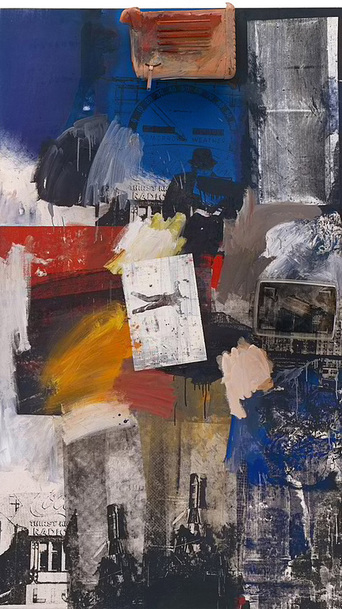the 'making history pop' project
essential question: are we all stuffed up?
What is pop ART?
Published on Dec 9, 2014 (created by Art Gallery of NSW, found on YouTube and used by Ms. Axford to explain Pop Art).
Popular, witty, sexy, glamorous – pop art exploded onto the cultural scene in the early 1960s. A new generation of artists rebelled against ‘high art’ to embrace the world of advertising, television, film stars, pop music and consumerism. Pop art shocked many but inspired even more.
Popular, witty, sexy, glamorous – pop art exploded onto the cultural scene in the early 1960s. A new generation of artists rebelled against ‘high art’ to embrace the world of advertising, television, film stars, pop music and consumerism. Pop art shocked many but inspired even more.
- Category Education
- License Standard YouTube License
pop art in australia (MADE IN OZ)
"In the 1950s Australia shared the same postwar booming economic conditions as much of the western world. By the early 1960s Australian artists were using pop culture references to reflect the growing dominance of advertising and consumerism. Many were also reacting against the expressive abstraction prevalent in Sydney, or the anxious figurative art of the largely Melbourne-based Antipodean Group.
By 1964 pop art provided an alternative to both these movements, and critic and curator Daniel Thomas declared it to be ‘really proliferating. It is undeniably pop art, clearly acknowledging its source material in signs, trademarks, advertisements, comic strips.’
Australian pop is energetic, daring and often erotic, as exemplified by the work of Richard Larter. During the 1960s Australia’s deeply conservative society started to become more open. Along the way, some pop artists – such as Mike Brown and Martin Sharp – challenged what they saw as repressive social norms resulting in high-profile court cases.
In common with British pop art, Australian pop often used a collage aesthetic and painterly style, and included abstract elements. Inevitably pop was discussed within the context of ongoing debates about regionalism versus internationalism, and Australian pop was often an unruly hybrid of local and international styles and subjects."
(Accessed on 16th of August 2015 at http://www.artgallery.nsw.gov.au/education/education-materials/education-kits/exhibition-kits/pop-to-popism/made-in-oz/).
By 1964 pop art provided an alternative to both these movements, and critic and curator Daniel Thomas declared it to be ‘really proliferating. It is undeniably pop art, clearly acknowledging its source material in signs, trademarks, advertisements, comic strips.’
Australian pop is energetic, daring and often erotic, as exemplified by the work of Richard Larter. During the 1960s Australia’s deeply conservative society started to become more open. Along the way, some pop artists – such as Mike Brown and Martin Sharp – challenged what they saw as repressive social norms resulting in high-profile court cases.
In common with British pop art, Australian pop often used a collage aesthetic and painterly style, and included abstract elements. Inevitably pop was discussed within the context of ongoing debates about regionalism versus internationalism, and Australian pop was often an unruly hybrid of local and international styles and subjects."
(Accessed on 16th of August 2015 at http://www.artgallery.nsw.gov.au/education/education-materials/education-kits/exhibition-kits/pop-to-popism/made-in-oz/).
robert rauschenberg
ROBERT RAUSCHENBERG (1925- 2008)
'Retroactive 1', 1964 (oil and silkscreen on canvas)
'Retroactive 1', 1964 (oil and silkscreen on canvas)
who is andy warhol?
Uploaded on Feb 26, 2012 to You Tube (by christieneale, Ms. Axford just using it to help explain Pop Art).
Pop Art lesson or kids and teens with Andy Warhol
Pop Art lesson or kids and teens with Andy Warhol
- Music "Where The Streets Have No Name (Single Edit)" by U2 (Google Play • iTunes)
- Category Education
- License Standard YouTube License
student exemplar: the 1970's & technology
DID YOU KNOW?
- The first computer chip became commercially available in 1971 and was released by the Intel corporation. This technology helped develop computers and with out this our world would be very different today.
- Personal computers such as the Apple II, TRS-80, Commodore PET, Atari 400/800 were released in America.
- The 1970's was the beginning of video games such as PONG with Atari dominating with home video gaming.
- More efficient and environmentally friendly cars were starting to be built such as the Lotus Esprit was high performing with a smaller engine.
- The Volkswagen Golf GTI was the first hatchback that sold well and changed automotive design.
- Microwave ovens surged in popularity because the price and size went down.
- Cassette tapes continued to soar in popularity with VHS and BETAMAX having an all out format war.
- The Pulsar PI was the first ever digital watch made in 1972. It cost $2100 US and was 18 karat gold.
- Sony Walkman's were introduced in 1979. It didn't record or come with a speaker but did have TWO jacks so two people could listen at once.
- The sound of the Epson MX-80 dot matrix printer was annoying but was the most popular printer of the 70's for personal computers.
- The 70's brought some of the biggest steps in the history of digital photography. In 1972 the first electronic camera that didn't need film was patented and in 1975 Kodak created the first digital camera. At the time it was never meant to be mass produced and it was huge!
Valuable links
Art Gallery NSW 'Pop to Popism' exhibition education resource http://www.artgallery.nsw.gov.au/education/education-materials/education-kits/exhibition-kits/pop-to-popism/
http://www.theartstory.org/artist-rauschenberg-robert.htm
http://www.theartstory.org/artist-rauschenberg-robert.htm


